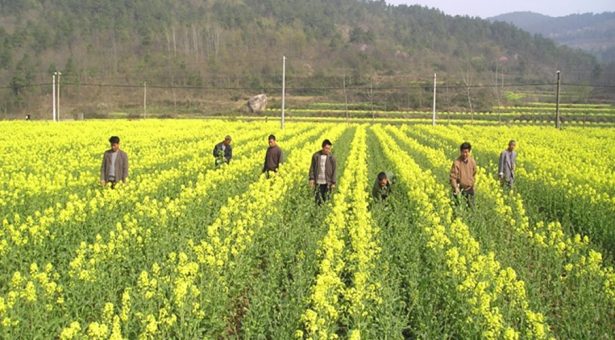Improving research infrastructure in the Yangtze River Basin

The Yangtze River basin, in China, is a globally important region for growing oilseed rape.
The crop is sown in autumn when the climate is hot and dry but at this time of year, 14 million hectares of the basin are at risk of drought, the probability of which is increasing year-on-year due to climate change.
Drought during this period affects germination and seedling establishment, reducing crop yields. As the risk of drought increases, rapeseed growing in this area is increasingly threatened, along with the livelihood of many rural communities.
Developing oilseed rape lines which are capable of germinating and establishing in extreme weather would improve the yield and overall success of this crop.
While new genotyping technologies have facilitated improved understanding of the genetics behind more resilient crop phenotypes, assessing seedling vigour characteristics of oilseed rape lines has presented a bottleneck to developing new varieties.
A Global Challenges Research Fund project led by Professor Steve Penfield has delivered improved infrastructure and capability to the Oil Crop Research Institute at the Chinese Academy of Agricultural Science (OCRI-CAAS) enabling testing and development of resilient oilseed rape capable of germinating and establishing under drought conditions.
The John Innes Centre and collaborators have developed SeedGerm, a high-throughput platform for assessing germination vigour in oilseed rape capable of overcoming the bottleneck in phenotypic assessment in multiple lines.
A project was initiated between the John Innes Centre and the OCRI-CAAS, funded through the Global Challenges Research Fund, which aimed to address sustainable development goals in the short-term by improving industry, innovation and infrastructure and longer-term by reducing poverty, through stabilising farm incomes from year to year.
We have transferred our SeedGerm technology to the OCRI-CAAS to enable selection of resilient oilseed rape lines for breeding.
The impact so far
- Capacity building at OCRI-CAAS through installation of SeedGerm
- Trained researchers in seed vigour analysis, computer vision and automated seed phenotyping
- Screened rapeseed germplasm and found genetic variation which influences the ability of this germplasm to germinate in unfavourable conditions
- Identified three genetic loci which are important for controlling germination in dry conditions
- Screened near market Chinese germplasm and identified lines which are suitable for direct seeding in dry conditions which are now being used by local breeders
This project resulted in networking and collaboration with researchers at the Chinese Academy for Agricultural University and Huazhong Agricultural University, Wuhan.
This collaboration facilitated knowledge transfer to John Innes Centre on brassica transformation protocols, which are now being established in our Crop Transformation Platform (BRACT).
Future impacts
- We have developed a model of rapeseed germination in soils with different temperatures and water potentials using near market germplasm, which will allow us to determine the likely effect of climate change on seedling establishment across China when used in combination with gridded climate models
- We anticipate that long-term this programme will secure the future income of some of China’s poorest citizens in the Yangtze River Basin, who rely on farm incomes and are susceptible to increased poverty if rapeseed crops fail due to poor establishment during hot dry weather
